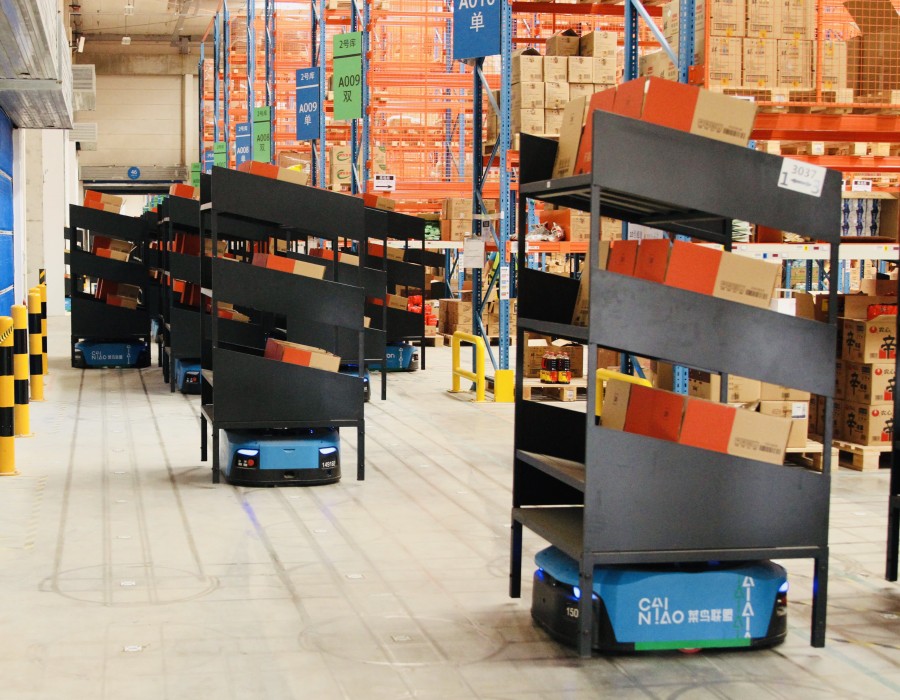1. What Does Next‑Move Strategy Consulting Reveal About the Market?
The China Warehouse Robotics Market size is predicted to reach USD 5.42 billion by 2030, at a CAGR of 18.1% from 2025 to 2030.In terms of volume, the market size is projected to reach 329.49 thousand units by 2030, with a CAGR of 19.3% from 2025 to 2030.
Download Free Sample: https://www.nextmsc.com/china-warehouse-robotics-market-se3141/request-sample
2. How Is Robot Era’s $69 Million Raise Shaping Intelligent Robotics?
Robot Era, a Tsinghua University spin‑out founded in 2023, recently closed a nearly 500 million yuan Series A round, equating to about 69 million dollars. This injection reflects investor confidence in embodied AI and robotics solutions tailored for logistics, manufacturing, and smart warehousing. The company has already delivered over 200 robotic units and is expanding delivery pipelines. Its flagship models like STAR1 and Q5, and its ERA‑42 control software, now perform over 100 voice‑command tasks.
This infusion enables Robot Era to scale manufacturing, enhance AI control systems for dexterity and autonomy, and position itself for broader logistics deployment.
3. What’s the Role of AI‑Powered Humanoid Robots in This Market?
China is gearing up for a factory revolution—deploying AI‑powered humanoid robots in sprawling Shanghai warehouses to perform tasks such as folding garments, making sandwiches, and opening doors in continuous, repetitive cycles. These robots are trained through high‑volume operations to generate rich interaction data. The program is part of a broader government push to fill labor gaps and boost productivity. President Xi Jinping’s recent visit to AgiBot’s plant underscores official endorsement, with Xi joking these robots might one day play football. AgiBot aims to mass‑produce humanoids by 2025, while companies like UBTech and EngineAI are likewise pushing forward with advanced models such as the Walker S2 and SE01.
Download Free Samples: https://www.nextmsc.com/human-centered-ai-market/request-sample
4. Why Are Humanoid Robots Becoming Integral to Warehousing?
– Flexibility vs. Traditional Automation: Unlike rigid industrial arms, humanoid platforms like those from AgiBot and Robot Era can navigate more varied environments and handle tasks requiring adaptability—especially in complex warehouse zones.
– Labor shortages and demographic pressure: China’s shrinking workforce and rising wages are driving warehouses toward AI‑powered systems that can operate with minimal human supervision around the clock.
– Volume‑driven training: Facilities like the AgiBot production center accumulate vast task data by running humanoids in high‑repetition workflows—feeding continuous learning loops that enhance performance.
5. Who Are the Leading Companies and What Are They Doing?
- Robot Era: Expanding humanoid and logistics‑ready platforms, backed by recent Series A funding and operational delivery of 200+ units.
- AgiBot: Running large-scale factories pushing mass production of humanoid robots, demonstrating strong political support, and open‑sourcing its robot dataset.
- UBTech: Released the Walker S2 humanoid capable of autonomously swapping batteries, enabling 24/7 warehouse and factory operations.
- EngineAI: Unveiled models like SE01 and PM01, with advanced locomotion (e.g. front flip demonstrations) built on end‑to‑end AI gait systems.
These firms reflect a rising ecosystem in hubs such as Shenzhen, Hangzhou, and Shanghai—each blending hardware, AI, and scale toward new deployment paradigms.
6. What Are the Emerging Market Drivers and Barriers?
Drivers:
- Surge in e‑commerce and logistics volumes requiring speed, precision, and 24/7 throughput.
- Demographic shifts and wage increases accelerating automation urgency.
- Government R&D funding, venture capital support, and national strategy alignment.
Barriers:
- High capital costs and integration complexity remain particularly acute for SMEs.
- Dependence on advanced domestic AI hardware and algorithms continues despite progress; some critics cite reliance on imported chip tech.
- Societal tensions around workforce displacement are prompting legislative interest in AI unemployment coverage.
7. What Lies Ahead for 2025 and Beyond?
- Robot Era’s expansion likely presages broader adoption of humanoid and logistics-ready robotics across major warehousing operations.
- AgiBot and peers may begin delivering larger fleets of adaptable humanoids capable of dynamic logistics tasks in controlled environments.
- Companies like UBTech and EngineAI are stepping into commercial deployments—Walker S2’s autonomous charging, SE01’s robust locomotion and human‑like control systems point toward real‑world applicability.
- Policy and standards at events such as the World AI Conference reinforce China’s ambition to be an international AI‑robotics leader while navigating social and regulatory concerns.
8. What Should Stakeholders Expect—and Do Next?
- Logistics operators should plan pilot integrations of AMRs and humanoid agents for complex zones like packing, sorting, and material handling.
- Technology buyers and SMEs may seek service‑based or leasing models to circumvent upfront investment barriers.
- Solution providers and systems integrators offering modular, interoperable robotics with AI‑based control software stand to gain as demand centers on integration.
- Policymakers and planners may need to build frameworks for workforce transition, such as proposals for AI unemployment insurance and re-skilling programs.
Conclusion
The China Warehouse Robotics Market is accelerating in 2025 thanks to a convergence of factors: intensified e‑commerce logistics, demographic shifts creating labor scarcity, high-profile investments such as Robot Era’s $69 million Series A, and rising production of adaptable, AI-powered humanoid robots from AgiBot, UBTech, EngineAI, and others. Recent developments underscore a transition toward intelligent, autonomous systems that extend far beyond traditional AGVs and robotic arms.
This moment marks a strategic inflection point: the China warehouse robotics space is evolving—and those ready to adopt, adapt, and innovate stand to be the winners. Whether you're advising clients, investing, or deploying systems, 2025 represents a watershed year in the rise of embodied AI in logistics.





Comments